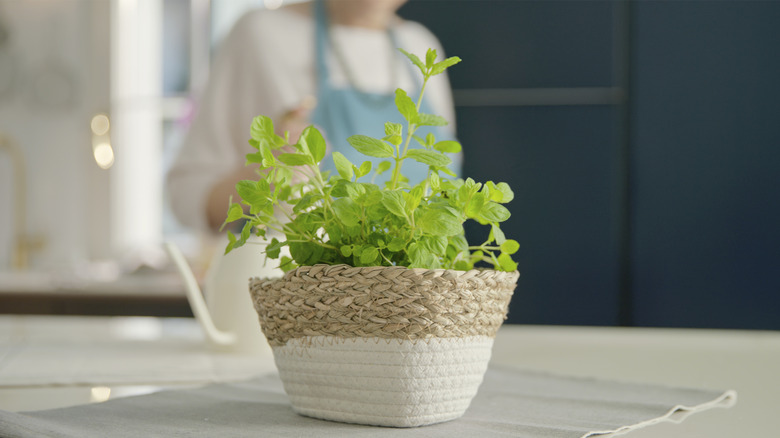The Easy Herb That Grows Beautifully Indoors With Lavender Throughout Winter
As the colder months approach, there's no reason to hit pause on your herb garden. Indeed, there are plenty of beautiful herbs that grow successfully indoors during winter, from staples like rosemary and basil to lesser-known options. One worthy addition to your indoor kitchen garden is the often-overlooked marjoram (Origanum majorana). Part of the mint family, this perennial dates back to ancient times and is even associated with Aphrodite, the Greek goddess of love, who is said to have been the one to create it.
These days, marjoram, which is rich in antioxidants, is used in various recipes to add a taste similar to oregano and thyme. Brewed as a tea, it can even help with digestion and ease cramps. Perhaps best of all, though, it is easy to grow and is a friendly companion plant that can benefit your garden in a big way.
Marjoram is a great partner for basil, chives, oregano, parsley, rosemary, sage, and thyme. It is also an especially great choice to plant alongside lavender as this duo can help one another thrive. Because both plants require similar growing conditions, they can easily share a space without one compromising the other. What's more, marjoram can help the lavender grow faster by helping increase its nutrient absorption and keeping pests at bay. Marjoram has even been known to improve lavender plants' flavor.
How to grow marjoram and lavender together indoors
Growing luscious lavender indoors as a houseplant is quite simple. This pretty, fragrant perennial isn't fussy and can thrive when two major conditions are met: lots of sun and minimal water. Lavender plants should get six to eight hours of direct sunlight a day and shouldn't be watered until the top inch or two of soil becomes dry to the touch. As for fertilizing, once every four to six weeks is enough in the spring and summer (using a fertilizer with a Nitrogen-Phosphorus-Potassium, or NPK, ratio of 5-10-10) and not at all in the fall and winter.
Coincidentally, these are the same conditions that marjoram requires, as it wants plenty of sunshine, fertilizer every four to six weeks in the summer, and minimal water to avoid root rot. What's more, marjoram prefers well-drained soil that is slightly alkaline with a pH between 6.7 and 7.0. Again, that is perfectly compatible with lavender, which thrives in soil with a pH between 6.7 and 7.3.
Space the marjoram and lavender plants about 12 to 18 inches apart and watch them thrive off one another. Once the marjoram passes 6 inches in height, you can begin to snip off its sprigs and use the leaves to add an unexpected note to your recipes.

